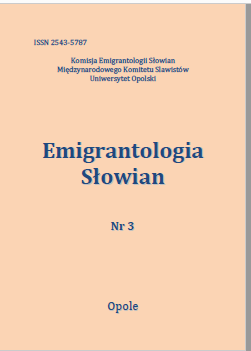Старообрядцы (семейские) Амурской области: история и особенности языкового существования
Old Believers (Semeiskie) of the Amur region: history and characteristic features of
their language situation
Author(s): Nina G. ArkhipovaSubject(s): Theoretical Linguistics, Lexis, Comparative Linguistics, Western Slavic Languages, Eastern Slavic Languages, Evaluation research, Migration Studies
Published by: Uniwersytet Opolski
Keywords: Old Believers; Semeiskie; dialects; migration; vocabulary;
Summary/Abstract: The article deals with the dialects of Old Believers (Semeiskie) of Amur region, the Russian dialects in the territories of late Slavic settlement. They are relatively local communities, because they were formed as a result of colonization movements of closed groups of Old Believers in a foreign language environment. These dialects experienced Polish and Belarusian language influence in the areas of Vetka and Starodubie, in the areas of Mongolian-Buryat Transbaikalia. Currently the Old Believers from Argentina and Brazil actively migrate into the Amur region of the Russian Federation. Due to the complexity of the historical fate of the Amur Old Believers, it is difficult to identify their substrate-dialects. Nowadays there are three groups of Old Believers’ dialects in the Amur region: 1) preserving the southern Russian dialectal features on all language levels and with "traces" of the Polish and Belarusian influence; 2) preserving single features not of southern Russian origin and having predominantly Northern Russian lexical system; 3) with a nonuniform structure and Belarusian influence achieved on the territory of the Amur region.
Journal: Emigrantologia Słowian
- Issue Year: 2017
- Issue No: 3
- Page Range: 41-53
- Page Count: 13
- Language: Russian

